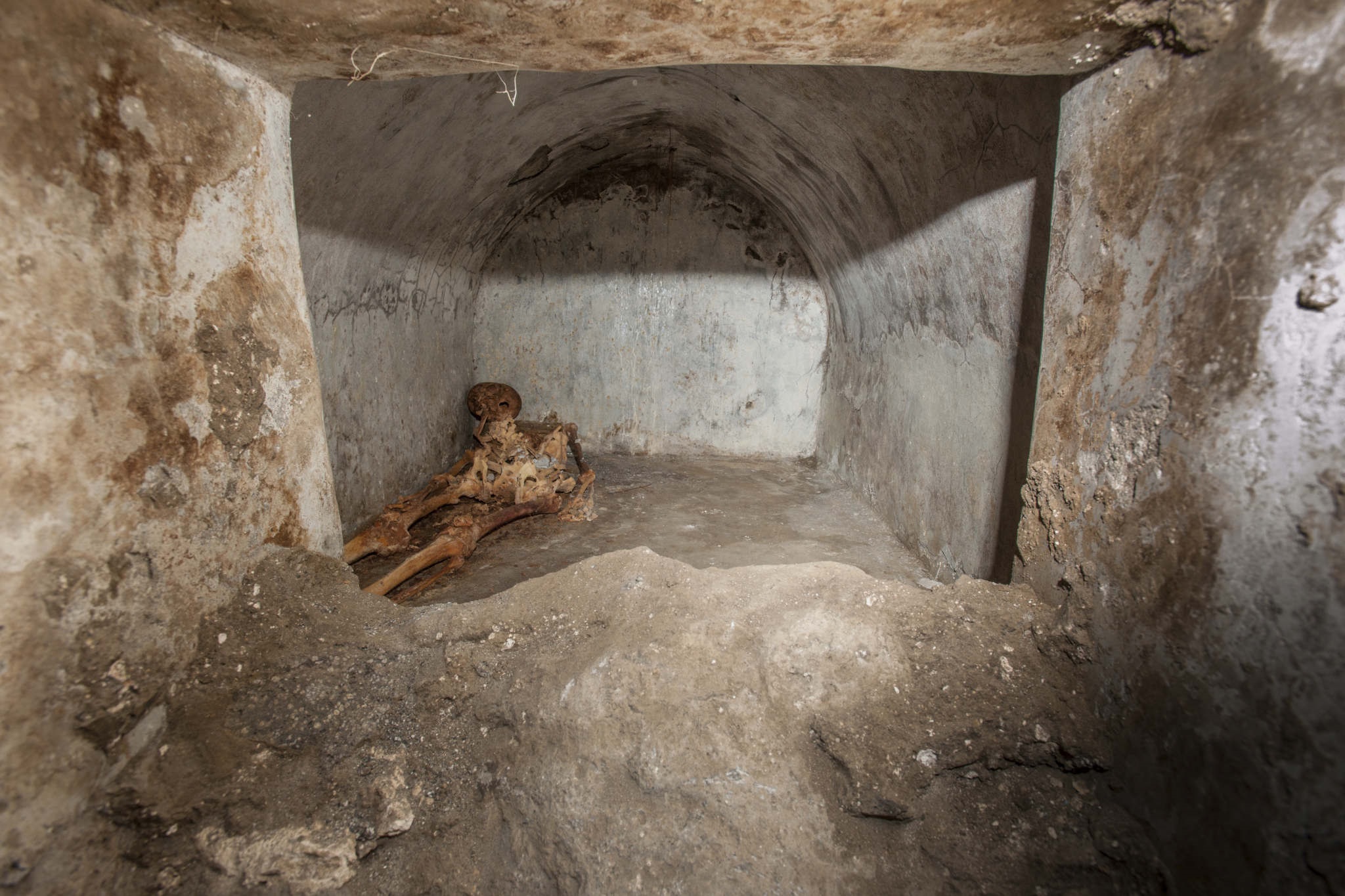Well-preserved skeleton sheds light on culture in ancient Pompeii


Rome: Archaeologists have uncovered a well-preserved skeleton at a burial site in Pompeii which has shed new light on funeral rites and cultural activity in the doomed, ancient Roman city, officials say.
The body of the man, believed to be in his 60s, was found in a tomb that dated to the final decades of Pompeii, before it was destroyed by the volcanic eruption of Mount Vesuvius in AD 79.
A commemorative inscription named the man as Marcus Venerius Secundio and made a reference to “ludi graeci” – theatre performances in Greek – the first time archaeologists have found direct evidence of plays performed at Pompeii in the language.
“That performances in Greek were organised is evidence of the lively and open cultural climate which characterised ancient Pompeii,” said Gabriel Zuchtriegel, director of Pompeii’s Archaeological Park.
The reference showed that the city was a cultural melting pot, where Greek, then the lingua franca of the eastern Mediterranean, was spoken alongside Latin, said Zuchtriegel, one of several foreign directors recruited in recent years to run Italian museums, galleries and archaeological sites.
The park said in a statement that it was one of the best preserved skeletons ever found at the site and showed signs of partial mummification, with hair and an ear still evident on the skull. Two cremation urns were also found in the tomb enclosure. Traces of decoration were found on the walls of the tomb – paintings of green plants against a blue background.


Archaeologists said adults were usually cremated in ancient Rome, and only small children were buried, which made the discovery all the more remarkable. “The burial of Marcus Venerius is highly unusual for the funeral rite that was adopted, considering he was an adult man over 60 years of age.
“The characteristics of the funerary chamber, which consisted of a hermetically sealed room, created conditions that allowed for the exceptional state of preservation in which the skeleton was found, with hair and an ear still visible,” archaeologists said.
They are investigating whether the man might have been embalmed ahead of burial. Certain textiles are known to have been used in embalming and archaeologists have found fragments of what might be fabric at the site.
Marcus Venerius’ name appears in another city archive, which identified him as a public slave and a custodian of the Temple of Venus. He was later freed and his imposing tomb suggests he had reached a certain social and economic status before his death.
Professor Llorenç Alapont, of the University of Valencia in Spain, who was involved in the discovery, said it wasn’t clear if the partial mummification was “due to intentional treatment or not”.
“Even for those like me, who have specialised in funerary archaeology for some time, the extraordinary wealth of information offered by this tomb is exceptional,” Alapont said.
The discovery of the burial chamber and skeleton “may in some ways change our knowledge on the rules of death rites in the Roman world”, he added.
The burial site is not currently accessible to visitors and lies beyond the city limits. Pompeii officials said they were looking into how they could open the area to the public.
Pompeii, 23 kilometres south-east of Naples, was home to about 13,000 people when the volcanic eruption buried it under ash, pumice pebbles and dust, freezing it in time.
The site was not discovered until the 16th century and organised excavations began around 1750. A recent burst of archaeological activity, aimed at halting years of decay and neglect, has enabled scholars to uncover areas that have previously remained buried under the volcanic debris.
Source: smh.com.au




